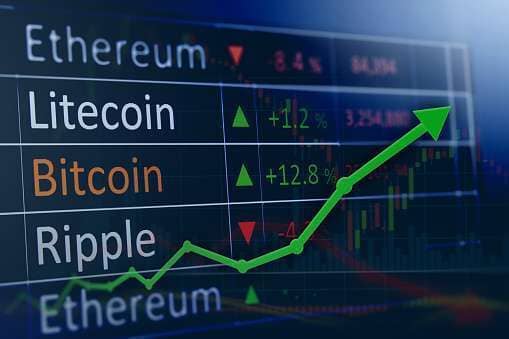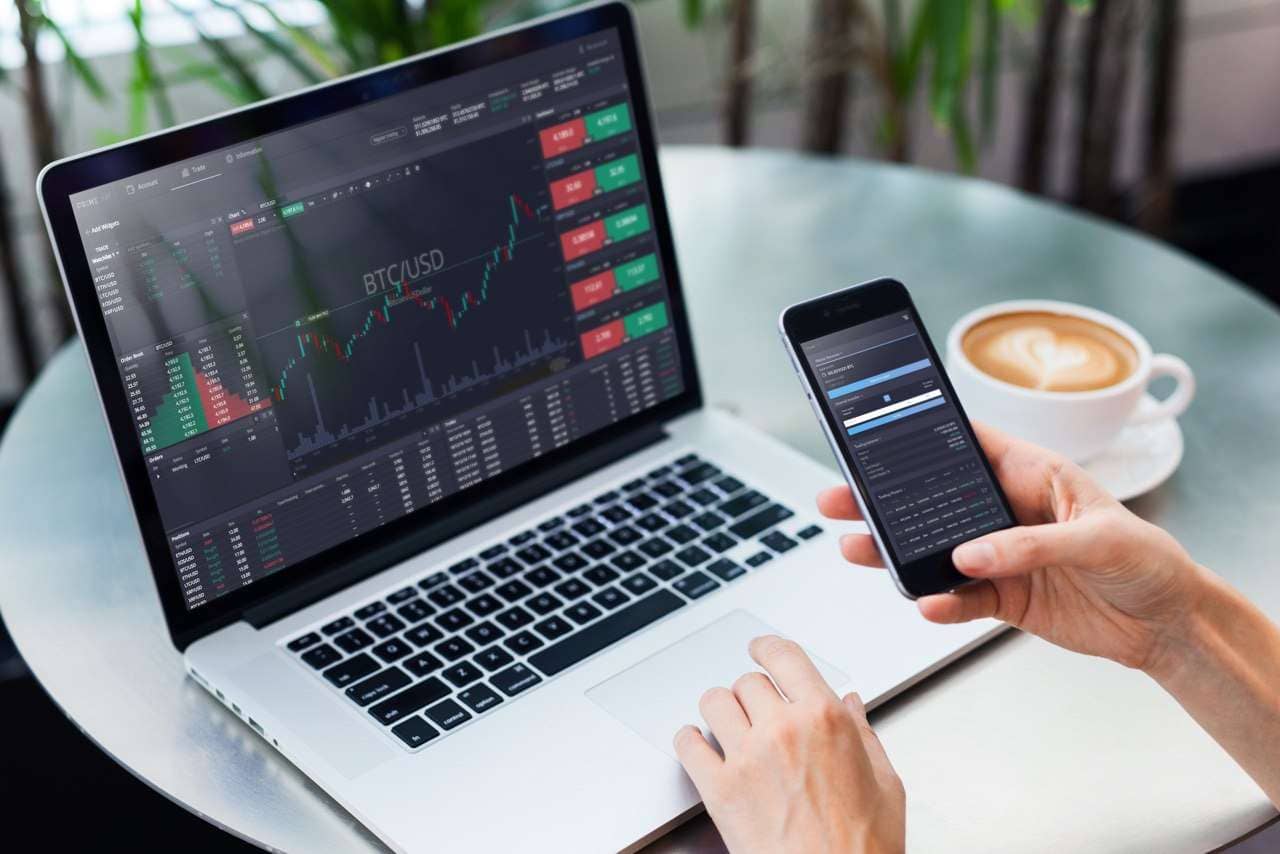Content
Volatility is how much and how quickly prices move over a given span of time. In the stock market, increased volatility is often a sign of fear and uncertainty among investors. This is why the VIX volatility index https://xcritical.com/ is sometimes called the “fear index.” At the same time, volatility can create opportunities for day traders to enter and exit positions. Volatility is also a key component in options pricing and trading.
- Insider’s experts choose the best products and services to help make smart decisions with your money (here’s how).
- In the periods since 1970 when stocks fell 20% or more, they generated the largest gains in the first 12 months of recovery, according to analysts at the Schwab Center for Financial Research.
- Finally, any investor should invest in a level of market volatility that they are comfortable with.
- Understanding that risk and volatility are not the same makes it much easier to manage both.
By ignoring volatility and holding on to your investments, you forestall short-term losses from selling at the wrong time. On the other hand, theprotective putis used tohedgean existing stock or a portfolio. When establishing a protective put, the investor wants prices to move higher but is buying puts as a form of insurance should stocks fall instead. If the market falls, the puts increase in value and offset losses from the portfolio. Derived from the price inputs of the S&P 500 Index options, it provides a measure of market risk and investors’ sentiments. Performance of VIX compared to past volatility as 30-day volatility predictors, for the period of Jan 1990-Sep 2009.
Volatility (finance)
Volatile assets can also skew the performance of an overall portfolio, and this may prompt investors to rebalance to achieve stability. Normally, historical volatility is measured by establishing the average deviation of a financial instrument from its average price over a given period of time. Standard deviation tends crypto volatility to be the most common measure of realised volatility, though there are other methods used to calculate this metric. Risky security is one that has a high historical volatility value though, in certain types of trades, it is not necessarily a negative factor since both bullish and bearish conditions could be risky.

Because market volatility can cause sharp changes in investment values, it’s possible your asset allocation may drift from your desired divisions after periods of intense changes in either direction. Market volatility is defined as a statistical measure of a stock’s (or other asset’s) deviations from a set benchmark or its own average performance. Loosely translated, that means how likely there is to be a sudden swing or big change in the price of a stock or other financial asset. Whether volatility is a good or bad thing depends on what kind of trader you are and what your risk appetite is.
Volatility for investors
Highly practiced investors and traders use their own methods for discerning patterns and signals from the technical chart. They follow several trading patterns in conjunction with the volatility ratio to facilitate investment-related decision-making. Review the Characteristics and Risks of Standardized Options brochure before you begin trading options. Options investors may lose the entire amount of their investment or more in a relatively short period of time. Did you know the average annual return on the overall stock market has been 7 percent? There has been a lot of stock market volatility during that time — including four U.S. stock market crashes.
Volatility is the frequent price fluctuations experienced by underlying security in a financial market. It is otherwise the rate at which the price rapidly increases or decreases. When the prices hit new highs and lows in a short period, the asset is said to have high volatility and is, therefore, riskier to trade. The former helps investors analyze an asset’s average performance, compare it against set intervals, and measure the deviations from that average. If the value rises consistently, there is a cause of concern as it usually denotes that changes are waiting to happen with the asset.

With investments, volatility refers to changes in an asset’s or market’s price — especially as measured against its usual behavior or a benchmark. It is effectively a gauge of future bets investors and traders are making on the direction of the markets or individual securities. Implied volatility , also known as projected volatility, is one of the most important metrics for options traders. As the name suggests, it allows them to make a determination of just how volatile the market will be going forward. One important point to note is that it shouldn’t be considered science, so it doesn’t provide a forecast of how the market will move in the future.
More from Merriam-Webster on volatility
These SPX options with Friday expirations are weighted to yield a constant maturity 30-day measure of the expected volatility of the S&P 500 Index. Analysts look at volatility in a market, an indexand specific securities. Links to non-Ally websites This icon indicates a link to a third party website not operated by Ally Bank or Ally.

Plus, investors and traders have no way of knowing which SPX calls and puts will be out-of-the-money on a future date. But SPX options expiry dates are known, along with the VIX Index formula for a given date, so that traders can estimate the price of the VIX Index. Volatility ratio is usually plotted as a single line on a technical chart. The line may either be in its own display window or appear as an overlay.
Day traders focus on volatility that occurs second-to-second or minute-to-minute, while swing traders focus on slightly longer time frames, usually days or weeks. Thomas J Catalano is a CFP and Registered Investment Adviser with the state of South Carolina, where he launched his own financial advisory firm in 2018. Thomas’ experience gives him expertise in a variety of areas including investments, retirement, insurance, and financial planning. Other works have agreed, but claim critics failed to correctly implement the more complicated models. Some practitioners and portfolio managers seem to completely ignore or dismiss volatility forecasting models. For example, Nassim Taleb famously titled one of his Journal of Portfolio Management papers “We Don’t Quite Know What We are Talking About When We Talk About Volatility”.
Rebalance Your Portfolio as Necessary
In this case, the values of $1 to $10 are not randomly distributed on a bell curve; rather. Despite this limitation, traders frequently use standard deviation, as price returns data sets often resemble more of a normal distribution than in the given example. There are a number of theories regarding the origins of volatility in markets and it’s likely that each of them have some grain of truth.
Downturns happen and they will continue to. But, what separates successful investors from the unsuccessful is the ability to remain focused on the long-term during times of short-term volatility.#CertifiedKingdomAdvisor pic.twitter.com/EVmfzGXpux
— Charles Kudrna, CKA®, CRPC®, AAMS® (@CharlesKudrna) February 2, 2023
Stock market volatility is a measure of how much the stock market’s overall value fluctuates up and down. Beyond the market as a whole, individual stocks can be considered volatile as well. More specifically, you can calculate volatility by looking at how much an asset’s price varies from its average price. Standard deviation is the statistical measure commonly used to represent volatility.
Volatility From the Investor’s Point of View
Divide the sum of the squared deviations (82.5) by the number of data values. INVESTMENT BANKING RESOURCESLearn the foundation of Investment banking, financial modeling, valuations and more. Many factors contribute to volatility, including undesirable political developments, unfavorable monetary policies, market sentiments, etc. We refine some for ourselves and export crude — which, in terms of volatility, is safer to transport.
CFDs are complex instruments and come with a high risk of losing money rapidly due to leverage. Chaos and volatility have long roiled the political panorama in Peru, where civilian rule returned in 1980 following a dozen years of military dictatorship. Casual market watchers are probably most familiar with that last method, which is used by the Chicago Board Options Exchange’s Volatility Index, commonly referred to as the VIX.

The volatility ratio is usually plotted as a single line on a technical chart. The author seems to have gotten the row numbers incorrect and forgotten to use their own Pro Tip of using 21 days of prices. Had they included 21 days in the table then the formulas would have worked out properly. But as it is above the calculations are not correct for a 20 Day Vol calculation as it is missing the first day required which would have moved everything down a row.
Examples of volatility
Though volatility isn’t the same as risk, volatile assets are often considered riskier because their performance is less predictable. Traders can also trade the VIX using a variety of options and exchange-traded products, or they can use VIX values to price certain derivatives products. When there is a rise in historical volatility, a security’s price will also move more than normal.
If the prices of a security fluctuate slowly in a longer time span, it is termed to have low volatility. HV and IV are both expressed in the form of percentages, and as standard deviations (+/-). If you say XYZ stock has a standard deviation of 10%, that means it has the potential to either gain or lose 10% of its total value.
Mutual Funds and Mutual Fund Investing – Fidelity Investments
Before joining Forbes Advisor, John was a senior writer at Acorns and editor at market research group Corporate Insight. His work has appeared in CNBC + Acorns’s Grow, MarketWatch and The Financial Diet. During the bear market of 2020, for instance, you could have bought shares of an S&P 500 index fund for roughly a third of the price they were a month before after over a decade of consistent growth.
Understanding Volatility
Volatility can be measured by comparing current or expected returns against the stock or market’s mean , and typically represents a large positive or negative change. Information provided on Forbes Advisor is for educational purposes only. Your financial situation is unique and the products and services we review may not be right for your circumstances. We do not offer financial advice, advisory or brokerage services, nor do we recommend or advise individuals or to buy or sell particular stocks or securities. Performance information may have changed since the time of publication.

Comentarios recientes